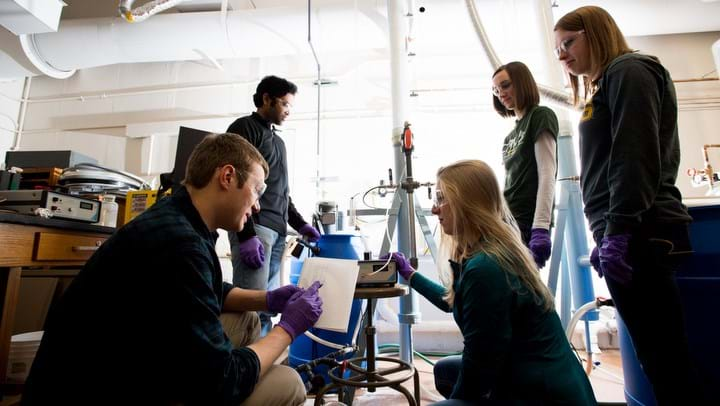Novel CO2 scrubber

RESEARCHERS at Michigan Technological University (MTU), US have designed a carbon dioxide (CO2) scrubber which could provide industry with a cheaper alternative. Captured CO2 could potentially be used to make useful products.
CO2 scrubbers are compounds that can be used to remove CO2 from flue gas emitted from power plants. Currently, industry relies on amine-based capture and it has only lightly implemented this technology due to the high costs involved.
The team at MTU has developed a sodium carbonate, or soda ash, scrubber, which in pilot-scale experiments reduced flue gas CO2 emissions from 8% to 4%. They aim to reduce emissions further to below 2%. According to PhD student Sriram Valluri, the team was able to reduce emissions to 0% in lab tests.
The researchers aim to produce useful products from the captured CO2. This could help industry make money and show it that a harmful product such as CO2 can be made profitable, said Komar Kawatra, Professor of Chemical Engineering at MTU.
The pilot-scale experiments are being carried out at MTU’s natural gas fired steam plant. Researchers tap a small sample of flue gas from the boiler’s main exhaust. The flue gas, which comes out at about 148.9–176.7°C, is then compressed through a filter that removes particles. It then passes through a cooling unit before entering the bottom of the scrubbing column. A sodium carbonate solution is pumped into the top of a 3.4m scrubbing column. The flue gas is bubbled through the column and the sodium carbonate removes CO2 from the gas as it moves through the column. The amount of carbon dioxide is monitored constantly.
In other research, PhD students Sriram Valluri and Victor Claremboux were able to produce oxalic acid from CO2 at lab scale. In industry, oxalic acid is used to leach rare earth elements – used in electronics such as cell phones – from ore bodies. Currently, no rare earths are produced in the US. The ability to produce oxalic acid domestically could allow for profitable domestic extraction of rare earths. This is important for national security said Kawatra.
Jim Simmons, who is supporting Kawatra’s research, said that this kind of CO2 scrubber could potentially provide “enormous” savings to industry. Simmons is an MTU alumnus in the Chemical Engineering Academy at MTU and Chairman of Carbontec Energy in Bismarck, North Dakota. A technoeconomic evaluation of CCS by Lawrence Livermore National Laboratory put amine costs at around US$3000/t. The soda ash that Kawatra’s team are using cost US$200/t.
However, though the technology has potential, there are still challenges involved. According to Valluri, the biggest challenge for the researchers is the fluctuating ratio of gases in the flue gas.
Sam Root, an undergraduate on the team, said: “You need a cascade control system that measures the carbon dioxide and manipulates the amount of scrubbing solution accordingly.”
The technology has been trade-named the Clearite VI Carbon Dioxide Capture/ Utilization Process, and has been patented. Technology sponsor and exclusive world-wide licensee, Carbontec Energy Corporation, plans to commercialise it through joint ventures and sub-licences.
Recent Editions
Catch up on the latest news, views and jobs from The Chemical Engineer. Below are the four latest issues. View a wider selection of the archive from within the Magazine section of this site.




